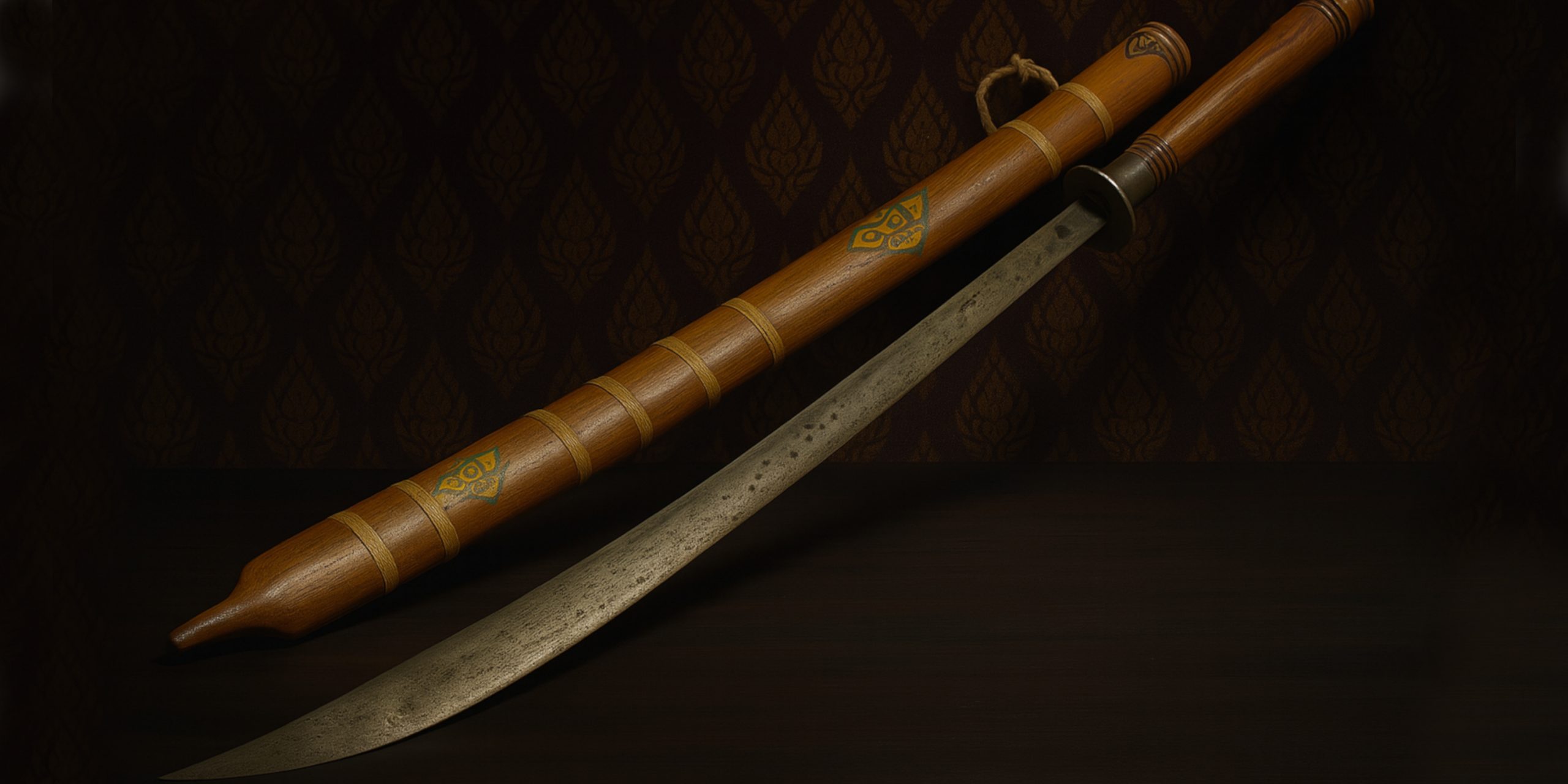
The Krabi-Krabong sword is integral to Thailand’s traditional martial arts heritage. Derived from the eponymous weapons-based combat system, Krabi-Krabong, this sword has deep roots in Siamese military history. Designed for swift strikes and coordinated dual-wielding, it was often paired with the daab (a curved Thai sword) or used alongside a shield or staff. Its practical design and elegant lines reflect both battlefield functionality and ceremonial significance.
Specification
| Feature | Details |
|---|---|
| Blade Length | Typically 60 to 80 cm |
| Overall Length | Around 90 to 100 cm |
| Blade Type | Single-edged, sometimes slightly curved |
| Hilt | Wooden or metal, often wrapped for grip |
| Guard | Modest crossguard or none |
| Weight | Approx. 0.8 to 1.2 kg |
| Steel Composition | Traditional carbon steel or modern equivalents |
| Scabbard | Wood or lacquered sheath with Thai motifs |
History and Evolution
- The Krabi-Krabong system emerged during the Ayutthaya period (14th–18th centuries), influenced by older Indian, Khmer, and Malay fighting styles.
- The sword was developed for use in military drills, battlefield combat, and royal guard training.
- It evolved to suit both infantry and cavalry use, with variants tailored for speed or power.
- Dual-sword forms (wielding two krabi) became popular among elite guards and martial practitioners.
- Though firearms eventually replaced swords in military settings, Krabi-Krabong persisted in ceremonial and cultural contexts.
Advantages and Disadvantages
Advantages:
- Lightweight and balanced for fast strikes and fluid movement.
- Compatible with dual wielding, allowing for complex combinations.
- Easily paired with shields or other weapons.
- Effective for slashing in close quarters due to compact size.
Disadvantages:
- Less reach compared to longer sabres or polearms.
- Lighter blade may struggle against heavier armoured opponents.
- Less protective hand guard leaves fingers and knuckles exposed.
Comparison with Similar Weapons
| Feature | Krabi-Krabong Sword | Katana | Dha (Burmese/Thai) | Talwar (Indian) |
|---|---|---|---|---|
| Blade Shape | Straight or slightly curved | Curved, single-edged | Long, narrow, curved | Curved with disc hilt |
| Use | Dual wielding, agile strikes | Precision cutting | Slashing, slicing | Powerful cuts, cavalry |
| Guard | Minimal | Prominent tsuba | Often none or very basic | Disc-shaped, protective |
| Cultural Origin | Thailand | Japan | Burma, Thailand, Laos | India |
Legacy
The Krabi-Krabong sword remains an enduring symbol of Thai martial tradition. It is still used in:
- Traditional performances and festivals
- Royal ceremonies involving military heritage
- Krabi-Krabong martial arts schools across Thailand
Its legacy is also preserved through cinematic portrayals, including films about Muay Thai and historical Siamese warriors.
Where to See
- Bangkok National Museum: Houses ceremonial and combat versions of the Krabi-Krabong sword.
- Suan Pakkad Palace Museum: Displays historical weaponry from Thai warfare.
- Ayutthaya Historical Park: Includes reconstructions and exhibitions of ancient arms.
- Royal Thai Army Museum: Features preserved arms from various dynasties.
Collector’s Guide
What to Look For:
- Original Thai craftsmanship, often indicated by forged carbon steel and hand-carved hilts.
- Traditional scabbards with lacquer or rattan wrap.
- Age verification and provenance, especially from the 18th or 19th century.
Replica vs Antique:
- Replicas are widely available and are often used in martial arts schools.
- Authentic antiques are rare and typically command higher prices due to condition, origin, and historical association.
Estimated Auction Prices:
| Type | Price Range (GBP) |
|---|---|
| Modern replica | £150 to £400 |
| High-end martial replica | £500 to £900 |
| 19th-century original | £1,200 to £3,500 |
| Royal or ceremonial piece | £5,000+ (with provenance) |
Collectors should be cautious of reproductions passed off as originals and should request documentation or expert assessment where possible.



